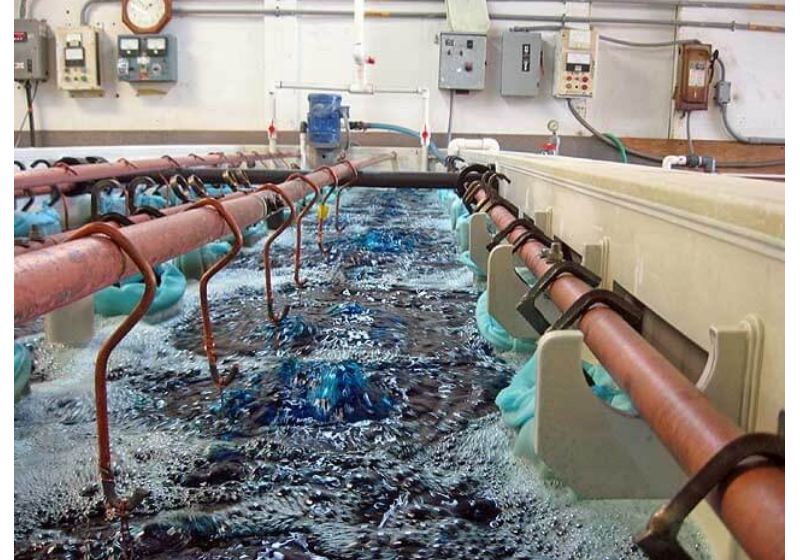Treatment Methods for Electroplating Wastewater
Cyanide is a highly toxic substance, and high concentrations of cyanide come from industrial wastewater containing cyanide, mainly including Electroplating Wastewater, Cyanide Gold Extraction, Coal Gas Washing Wastewater and Cooling water from coke ovens and blast furnaces, some Chemical and Beneficiation Wastewater, synthetic rubber, fiber and dye industries.
The Electroplating Wastewater discharged during the electroplating production process is divided into pre-treatment wastewater, electroplating rinsing wastewater, post-treatment wastewater, and electroplating waste liquid. It contains various highly toxic substances such as metal ions, acids, alkalis, cyanide, and additives that cause cancer, deformity, or mutation. Electroplating Wastewater is divided into chromium containing wastewater, cyanide containing wastewater, and comprehensive wastewater. Cyanide containing wastewater mainly comes from the scrap plating and copper plating processes.
Treatment Methods
Including Chemical method, Membrane separation method, Ion exchange method, Electrolytic oxidation method, etc.
Chemical Method
Chemical methods are still the most commonly used in the actual operation.
The principle is to utilize the reducibility of cyanide ions and achieve removal by adding oxidants such as chlorine based oxidants, ozone, hydrogen peroxide, etc. to oxidize cyanide ions.
According to the different types of oxidants added, the commonly used methods include alkaline chlorination, ozone treatment, chlorine dioxide synergistic oxidant cyanide breaking, etc. Among them, the most widely used method is alkaline chlorination.
The use of alkaline chlorination to break cyanide mainly involves two stages:
- The first stage is to oxidize cyanide into cyanate, which is usually called "Incomplete oxidation".
- The second stage is to further oxidize and decompose cyanate into carbon dioxide and ammonia, which is called "Complete oxidation".
Typically, chlorine containing agents include liquid chlorine, bleaching powder, sodium hypochlorite, chlorine dioxide, etc.
Advantages:Good treatment effect, high removal rate and compliance rate, but strict pH control requires frequent pH setting and program setting.
Disadvantages:When CN - is high, the consumption of oxidants is high, manufacturing costs are high, power consumption is high, equipment is complex, and equipment investment is high.
Membrane Separation Method
The membrane separation method is a selective separation membrane made of hydrophobic materials, which only allows CN - ions to pass through. On the other side of the membrane, there is an absorbent liquid alkali flowing. Driven by the concentration difference of CN - on both sides, CN - diffuses freely to the other side, and finally is absorbed by the liquid alkali, achieving the purpose of separation and purification.
Membrane separation has methods such as ultrafiltration, microfiltration, nanofiltration, and reverse osmosis.
Advantages: Efficient, energy-saving, and easy to operate without pollution.
Disadvantages: The membrane has a relatively short lifespan, high cost, and is prone to poisoning, and this method cannot handle copper cyanide complex ions.
Ion Exchange Method
It is to use anion exchange resin to adsorb various cyanide complexes in the form of anions in wastewater. When the effluent CN - exceeds the standard, the resin is pickled and regenerated to recover sodium cyanide from the eluent.
Advantages: Due to the good and stable quality of purified water, this method can be reused and can also recover cyanide and heavy metal compounds.
Disadvantages: Complex processes, high operational difficulties, high processing costs, and low economic benefits.
Visit www.evuchina.com for more informations!

#QDEVU #WATERTREATMENT #WASTEWATERTREATMENT #SEWAGETREATMENT #SEWAGEWATERTREATMENT #WATERFILTER #WATERFILTRATION #SLUDGETREATMENT #SLUDGEDEWATERING



